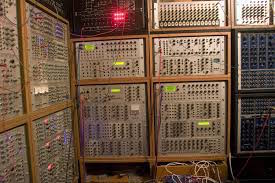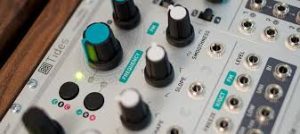
There are now literally thousands of Eurorack modules available to purchase, from dozens of companies, ranging from fairly substantial to one-person mom and pop shops. The quest to build the modular synth of your dreams is finicky, expensive, and never-ending. Anyone who has been doing this for a while has made mistakes, and purchased something that turned out to not be suitable for them. Mistakes can be financially costly, although many modules hold a significant portion of their value when sold as used.
So you have a few bucks stowed away, and you are ready to buy your next module. What do you get? How do you do it?
1. Identify the function you need most. It’s not just about getting the coolest thing you’ve heard of. What function is the next thing you need to expand the capabilities of all the modules you already have? A sound generator? A CV modulator? A mixer or audio I/O? Remember, a system filled with nothing but sexy modules with lots of blinky lights doesn’t have near the power or flexibility of a well-thought out system with all the utility stuff you need. Envelopes, mults, VCA’s, and LFO’s can be somewhat boring, but they are just as important to the overall system as a really cool wavetable oscillator.
2. Do research online. Muffwiggler and ModularGrid are excellent starting points for your research. ModularGrid has an amazing search feature, which allows you to specify function, manufacturer, width, and so on.
3. Listen online. There are loads of YouTube videos about nearly every module out there. Listen to what other people do with the module, and let that narrow your choices.
4. Most importantly, try it out in person whenever possible. This is such an individual thing, which is what makes it so powerful and expressive. Other people will have opinions that can help guide you, but the final step in the operation must be about your physically listening and playing with the item whenever possible. The final answer will be dictated by that approach, and may surprise you.
For example, I was looking for one more oscillator to finish up my system (for now). I searched on ModularGrid for something that would fit in the space I had, and narrowed it down. I then listened to examples and looked at functionality for my final choices, and settled on an E350 Morphing Terrarium. Cool module, lots of interesting capabilities by being able to index through wavetables, very highly rated by other people. So I pulled an oscillator that I had purchased at the beginning of my journey into Eurorack, but that didn’t do anything for me, to take for trade value. Went to my local shop (Perfect Circuit Audio in Burbank, CA) armed to buy the Morphing Terrarium. And then I sat and worked with the module for 15 minutes or so, listening intently, operating all the functions, plugging in CV modulation, and really concentrating on whether this unit would reflect my personality and electronic music goals.

As it turned out, the unit in person didn’t grab me. It’s not that it was not an interesting oscillator – it absolutely was. It just wasn’t the right one for me. So after listening carefully to several others, I ended up purchasing a Mutable Instruments Tides. About half the cost of the Morphing Terrarium, but that wasn’t my driving interest in this case, as I had saved enough to buy the more expensive unit. There was just something about the way it indexed through waveshapes that immediately grabbed me. And the fact that there was alt firmware out there which gave it a couple of totally new functions sealed the deal. I walked away with a Tides, some money left in my pocket to spend on my kids this weekend, and a different perspective on what I was looking for.
